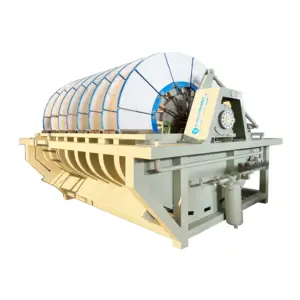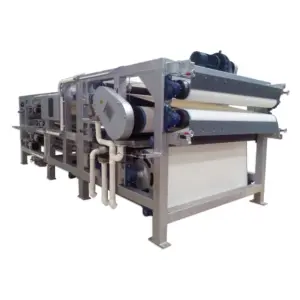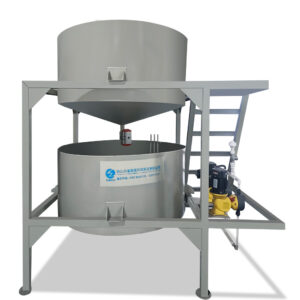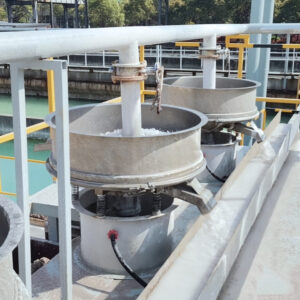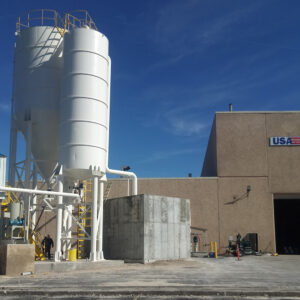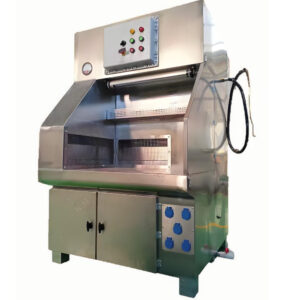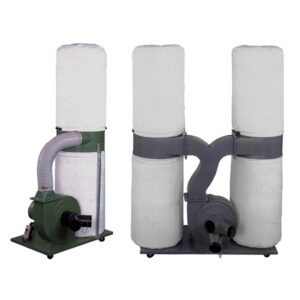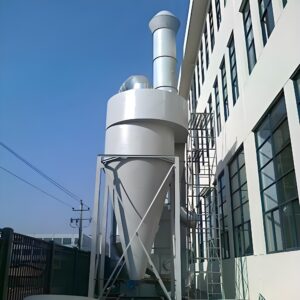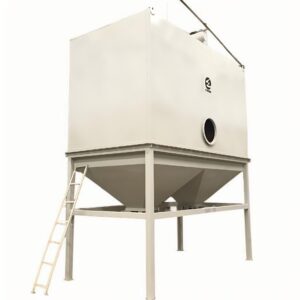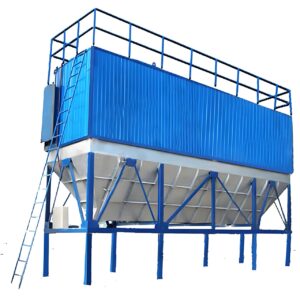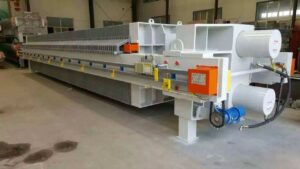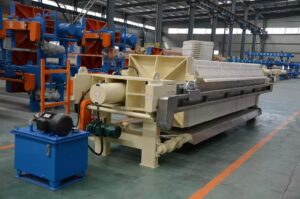The mining industry generates over 20 billion gallons of wastewater annually, presenting one of the most complex environmental challenges in heavy industry today. From copper extraction facilities producing acidic runoff to coal processing plants dealing with suspended solids, mining operations create diverse wastewater streams that demand specialized treatment approaches. Without proper management, these effluents can contaminate groundwater sources, harm aquatic ecosystems, and result in regulatory violations costing millions in fines.
The consequences of inadequate mining wastewater treatment extend far beyond environmental impact. Mining companies face increasingly stringent discharge regulations, with some jurisdictions requiring near-zero liquid discharge standards. Failed treatment systems can force operational shutdowns, damage community relationships, and create long-term liability issues that persist for decades after mining activities cease.
This comprehensive guide explores proven strategies for managing mining industry water treatment challenges, from understanding contaminant characteristics to selecting optimal treatment technologies. We’ll examine real-world applications, cost-benefit analyses, and emerging solutions that help mining operations achieve both environmental compliance and operational efficiency. PORVOO Clean Tech has worked with mining operations worldwide, providing insights into effective treatment system design and implementation.
What is Mining Wastewater Treatment and Why Does It Matter?
Mining wastewater treatment encompasses the processes used to remove contaminants from water used in mineral extraction, processing, and associated operations. Unlike municipal wastewater, mining effluents contain unique combinations of heavy metals, acids, suspended solids, and chemical reagents that require specialized treatment approaches.
Understanding Contaminant Characteristics
The complexity of mining wastewater stems from its highly variable composition. Copper mining operations typically generate effluents with pH levels between 2.5 and 4.0, containing dissolved metals like copper, zinc, and iron at concentrations exceeding 100 mg/L. Coal processing facilities produce wastewater with high total suspended solids (TSS) levels, often ranging from 500 to 2,000 mg/L, along with dissolved organics and trace metals.
According to the International Council on Mining and Metals, effective treatment systems must address both acute toxicity and chronic environmental impacts. Heavy metals like lead, mercury, and cadmium can bioaccumulate in aquatic systems, while acidic conditions alter ecosystem pH levels and mobilize additional contaminants from sediments.
Regulatory Framework and Compliance
Mining operations must comply with discharge standards that vary significantly by jurisdiction and receiving water body. The U.S. Environmental Protection Agency’s effluent limitation guidelines for mining operations require specific treatment performance standards for different mining categories. For example, copper ore processing facilities must achieve copper discharge limits below 0.5 mg/L, while maintaining pH levels between 6.0 and 9.0.
In our experience working with mining operations, regulatory compliance represents just the minimum threshold. Leading companies implement treatment systems that exceed regulatory requirements, providing operational flexibility and reducing long-term environmental liability.
What Are the Main Challenges in Mining Industry Water Treatment?
Mining wastewater treatment faces unique technical and operational challenges that distinguish it from other industrial water treatment applications. Understanding these challenges is crucial for developing effective treatment strategies.
Acid Mine Drainage Management
Acid mine drainage (AMD) represents one of the most persistent challenges in mining water treatment. This phenomenon occurs when sulfide minerals in exposed rock react with oxygen and water, producing sulfuric acid and dissolved metals. AMD can continue for decades or even centuries after mining operations cease, requiring long-term treatment solutions.
A study by the Department of Energy found that AMD affects over 12,000 miles of streams in the United States alone. Treatment costs for legacy AMD sites exceed $15 billion annually, highlighting the importance of proactive management strategies. Modern mining operations implement preventive measures like selective waste placement and chemical neutralization to minimize AMD generation.
Variable Flow Rates and Contamination Levels
Mining operations experience significant variations in wastewater flow rates and contamination levels based on production cycles, weather conditions, and processing requirements. During peak production periods, flow rates can increase by 300-400% compared to baseline conditions, while metal concentrations may vary by orders of magnitude.
This variability creates challenges for treatment system design and operation. Fixed-capacity treatment systems may become overwhelmed during peak periods, while oversized systems operate inefficiently during normal conditions. Successful treatment strategies incorporate flow equalization and flexible treatment capacity to accommodate these variations.
Integration with Process Operations
Unlike standalone wastewater treatment facilities, mining water treatment systems must integrate seamlessly with ongoing mining operations. Treatment system downtime can force production shutdowns, while maintenance activities must be coordinated with mining schedules.
How Do Different Mining Operations Generate Wastewater?
Understanding wastewater generation patterns across different mining operations is essential for designing effective treatment systems. Each mining type presents unique characteristics that influence treatment requirements and technology selection.
Hard Rock Mining Operations
Hard rock mining operations, including copper, gold, and iron ore extraction, generate wastewater through multiple pathways. Mine dewatering produces large volumes of groundwater that may contain naturally occurring dissolved metals. Processing operations use chemical flotation and leaching processes that create contaminated process water requiring treatment.
| Mining Type | Primary Contaminants | Typical Flow Rate | Treatment Challenges |
|---|---|---|---|
| Copper Mining | Cu, Fe, SO₄, Low pH | 500-2,000 gpm | Acid neutralization, metal precipitation |
| Gold Mining | CN, As, Hg, TSS | 200-1,500 gpm | Cyanide destruction, mercury removal |
| Iron Ore | Fe, TSS, Oil/Grease | 1,000-5,000 gpm | Solids removal, clarification |
Coal Mining and Processing
Coal mining operations generate wastewater from underground mine drainage, coal preparation plants, and surface runoff. Underground mines produce continuous groundwater inflow that requires pumping and treatment. Coal preparation facilities use dense media separation and froth flotation processes that create wastewater containing suspended solids, dissolved salts, and chemical additives.
Recent industry data indicates that coal preparation plants process approximately 1.5 billion tons of coal annually, generating over 3 billion gallons of process wastewater. Treatment typically focuses on solids removal, oil and grease separation, and pH adjustment to meet discharge standards.
Mineral Processing Facilities
Mineral processing operations concentrate raw ores into marketable products through crushing, grinding, flotation, and chemical leaching processes. These operations generate tailings water containing suspended solids, dissolved metals, and chemical reagents used in processing.
As environmental engineer Dr. Sarah Martinez notes, “Mineral processing water treatment requires understanding both the chemistry of the ore body and the processing reagents used. Each operation creates a unique ‘chemical fingerprint’ that influences treatment design.”
What Technologies Are Used for Mining Effluent Treatment?
Modern mining operations employ diverse treatment technologies to address specific contaminants and achieve discharge standards. Technology selection depends on wastewater characteristics, discharge requirements, and economic considerations.
Physical Treatment Processes
Physical treatment processes remove suspended solids and separate immiscible liquids from mining wastewater. Clarification systems using conventional settling tanks can achieve 85-95% removal of suspended solids larger than 50 microns. High-rate clarifiers with lamella plates or tube settlers provide enhanced settling capacity in compact footprints.
Filtration systems provide final polishing for suspended solids removal. Sand filtration achieves effluent TSS levels below 10 mg/L, while membrane filtration can reduce TSS to less than 1 mg/L. However, membrane systems require careful pretreatment to prevent fouling from high-strength mining wastewaters.
Chemical Treatment Systems
Chemical treatment processes neutralize acidic conditions and precipitate dissolved metals from mining wastewater. Lime addition remains the most common neutralization method, raising pH levels to 8.5-9.5 where most metals precipitate as hydroxides. Limestone neutralization provides slower pH adjustment and creates less sludge volume, but requires longer retention times.
Advanced chemical treatment systems incorporate multi-stage precipitation processes that optimize metal removal efficiency. Sequential pH adjustment allows selective metal precipitation, reducing sludge volume and potentially recovering valuable metals.
Biological Treatment Applications
Biological treatment processes utilize microorganisms to remove organic contaminants and reduce metal concentrations through biosorption and bioaccumulation. Sulfate-reducing bacteria systems can treat acid mine drainage by generating hydrogen sulfide that precipitates metals as insoluble sulfides.
Constructed wetlands provide passive treatment for mining wastewater, particularly for AMD management. These systems achieve 70-90% metal removal efficiency while requiring minimal operational input. However, wetland systems require large land areas and may have limited effectiveness during winter months in cold climates.
How Can Heavy Industry Wastewater Be Effectively Managed?
Effective heavy industry wastewater management requires integrated approaches that consider both treatment technology and operational strategies. Successful programs combine source reduction, treatment optimization, and water reuse to minimize environmental impact and operational costs.
Source Reduction Strategies
Source reduction represents the most cost-effective approach to wastewater management. Process modifications that reduce water consumption directly decrease wastewater generation volumes. Dry processing techniques, where applicable, can eliminate water usage entirely for specific operations.
Water recycling within processing circuits reduces fresh water consumption and wastewater generation. Closed-loop flotation circuits can achieve 85-95% water recovery, significantly reducing external water requirements. However, dissolved contaminants may accumulate in recycled water, requiring periodic bleed-off for treatment.
Treatment System Optimization
Modern treatment systems incorporate automated control systems that optimize performance based on real-time water quality monitoring. pH controllers automatically adjust chemical feed rates to maintain optimal precipitation conditions, while turbidity monitors control filtration backwash cycles.
In our experience, automated systems reduce chemical consumption by 15-25% compared to manual operation while improving treatment consistency. Advanced process control systems can predict treatment requirements based on upstream process conditions, enabling proactive rather than reactive management.
Water Reuse and Recovery
Water reuse programs reduce fresh water consumption and wastewater discharge volumes while providing economic benefits. Treated wastewater systems can produce water suitable for dust suppression, equipment washing, and process makeup applications.
| Reuse Application | Water Quality Requirements | Treatment Level Required |
|---|---|---|
| Dust Suppression | TSS < 50 mg/L | Primary treatment |
| Equipment Washing | TSS < 20 mg/L, pH 6-9 | Secondary treatment |
| Process Makeup | Site-specific standards | Advanced treatment |
What Are the Economic Benefits of Modern Mining Water Treatment?
Investment in modern mining water treatment systems provides multiple economic benefits that often exceed initial capital costs. Understanding these benefits helps justify treatment system investments and optimize long-term operational strategies.
Regulatory Compliance Cost Avoidance
Regulatory violations for mining operations can result in significant financial penalties and operational restrictions. The average EPA enforcement action for mining violations exceeds $2.5 million, with some cases resulting in penalties over $25 million. Effective treatment systems eliminate violation risks while providing operational certainty.
Beyond direct penalty costs, regulatory violations can trigger increased monitoring requirements, third-party oversight, and operational restrictions that increase long-term costs. Proactive compliance through effective treatment systems avoids these additional burdens.
Water Cost Reduction
Water costs represent a significant operational expense for mining operations, particularly in water-scarce regions. Fresh water costs for mining operations range from $0.50 to $5.00 per thousand gallons, depending on local availability and regulatory requirements.
Treatment systems that enable water reuse can reduce fresh water consumption by 40-70%, providing direct cost savings. A typical copper mining operation processing 100,000 tons per day can save $500,000 to $2 million annually through water reuse programs.
Operational Efficiency Improvements
Modern treatment systems provide operational benefits beyond environmental compliance. Consistent water quality reduces equipment fouling and corrosion, extending equipment life and reducing maintenance requirements. Process water recycling can improve flotation performance by maintaining optimal reagent concentrations.
As mining engineer Dr. Robert Chen observes, “The best treatment systems don’t just manage wastewater—they optimize the entire water cycle to support production efficiency.”
How to Select the Right Mineral Processing Water Treatment System?
Selecting appropriate mineral processing water treatment systems requires careful evaluation of site-specific conditions, treatment requirements, and economic factors. A systematic approach ensures optimal technology selection and long-term operational success.
Site Assessment and Characterization
Comprehensive site assessment begins with detailed wastewater characterization including flow rates, contaminant concentrations, and variability patterns. Pilot testing provides critical data for technology selection and design optimization. Bench-scale tests can evaluate treatment efficiency, while pilot systems demonstrate full-scale performance under actual operating conditions.
Geotechnical and environmental site conditions influence treatment system design and construction requirements. Factors like soil conditions, climate, and available utilities affect system configuration and costs.
Technology Evaluation Criteria
Technology evaluation should consider multiple factors including treatment efficiency, capital costs, operating costs, and operational complexity. Life-cycle cost analysis provides the most accurate comparison between alternative technologies.
| Evaluation Factor | Weight | Conventional Treatment | Advanced Treatment |
|---|---|---|---|
| Capital Cost | 25% | Lower initial cost | Higher initial cost |
| Operating Cost | 30% | Moderate chemicals/energy | Lower chemicals/energy |
| Treatment Efficiency | 35% | Meets standards | Exceeds standards |
| Operational Complexity | 10% | Simple operation | Complex operation |
Implementation and Commissioning
Successful treatment system implementation requires careful project management and phased commissioning approaches. Professional wastewater treatment systems benefit from experienced engineering support during design, construction, and startup phases.
Commissioning protocols should include equipment testing, process optimization, and operator training. Staged startup procedures allow gradual system optimization while maintaining operational flexibility.
While modern treatment technologies provide excellent performance, they require ongoing maintenance and skilled operators. Regular maintenance programs and operator training ensure consistent performance and prevent costly system failures.
Conclusion
Modern mining wastewater treatment represents a critical intersection of environmental responsibility and operational efficiency. The strategies and technologies discussed in this guide provide mining operations with proven approaches to achieve regulatory compliance while optimizing water usage and reducing operational costs.
Key insights from industry experience include the importance of integrated water management approaches that combine source reduction, treatment optimization, and water reuse. Successful programs require careful technology selection based on site-specific conditions, supported by comprehensive monitoring and adaptive management strategies.
The economic benefits of effective treatment systems—including regulatory compliance assurance, water cost reduction, and operational efficiency improvements—typically justify initial investments within 3-5 years. As environmental regulations continue to evolve and water scarcity increases globally, proactive investment in treatment infrastructure becomes increasingly valuable.
Looking forward, emerging technologies like advanced membrane systems, electrochemical treatment, and artificial intelligence-driven process control promise to further improve treatment efficiency and reduce costs. Mining operations that invest in modern treatment infrastructure today position themselves for long-term success in an increasingly regulated and resource-constrained environment.
For mining operations seeking to optimize their water management strategies, consider how comprehensive treatment solutions can address your specific challenges while providing long-term operational and environmental benefits. What unique wastewater challenges does your operation face, and how might modern treatment technologies provide innovative solutions?
Frequently Asked Questions
Q: What is mining wastewater treatment and why is it important in heavy industry applications?
A: Mining wastewater treatment refers to the processes used to clean and manage water that has been contaminated by mining activities. It is essential in heavy industry because mining operations generate wastewater containing harmful substances like heavy metals, suspended solids, and chemicals. Treating this wastewater helps protect the environment, comply with regulations, conserve fresh water resources, and enable water reuse in mining processes, thus supporting sustainable and efficient operations.
Q: What are the common contaminants found in mining wastewater?
A: Mining wastewater typically contains:
- Suspended solids and sediment
- Heavy metals like lead, copper, and mercury
- Chemical residues from mineral processing
- Acidic or alkaline substances resulting from leaching processes
- Organic pollutants from site operations
Effectively removing these contaminants is crucial to prevent soil and water pollution and to meet environmental standards in heavy industry.
Q: What treatment methods are used in mining wastewater treatment for heavy industry applications?
A: Several treatment methods are commonly applied, often in combination:
- Sedimentation and filtration to remove solids
- Chemical precipitation to extract heavy metals
- Biological treatment using microbes to degrade organic pollutants
- Activated carbon adsorption to remove certain organic and inorganic contaminants
- Membrane techniques such as reverse osmosis for dissolved salts and fine particles
- Ion exchange for targeted removal of specific metal ions
These methods together ensure comprehensive treatment suited to diverse mining wastewater compositions.
Q: How does mining wastewater treatment support sustainability in mining operations?
A: Treating mining wastewater promotes sustainability by:
- Reducing freshwater consumption through water recycling
- Minimizing environmental pollution and soil contamination
- Enabling compliance with stringent environmental regulations
- Enhancing resource efficiency by recovering valuable metals and reducing waste
- Supporting safer dust control and tailings management at mining sites
These outcomes help mining companies operate responsibly while conserving precious water and protecting surrounding ecosystems.
Q: What are the latest innovations in mining wastewater treatment for heavy industry?
A: Advanced solutions continue to evolve, including:
- Cutting-edge filtration technologies like advanced membrane systems
- Innovative biological and chemical treatments targeting specific contaminants
- Emerging approaches such as nanotechnology and advanced oxidation processes for enhanced contaminant breakdown
- Integrated treatment systems designed for site-specific challenges
These innovations offer more effective, efficient, and environmentally friendly options for mining wastewater management in heavy industry.
Q: What challenges do mining companies face when treating wastewater and how can they be overcome?
A: Key challenges include:
- Managing high volumes of wastewater with variable contaminant loads
- Treating heavy metals and acidic or alkaline waste streams effectively
- Balancing treatment efficiency with operational costs and regulatory compliance
- Operating in remote or large-scale mining camps with limited infrastructure
Solutions involve tailoring treatment systems with combined technologies, continuous monitoring, and adopting sustainable practices to optimize treatment performance and environmental safety.
External Resources
Effective Wastewater Treatment for Large Mining Camps | Blog – This resource examines the core challenges and advanced technologies used in wastewater treatment for large mining camps, with a focus on efficient water reuse, dust control, and environmental compliance in heavy industry applications.
Mining & Mineral Processing Water Treatment | Veolia WTS – Veolia details various methods for treating mining wastewater, including sedimentation, chemical precipitation, biological treatment, and advanced filtration, specifically for environmental management in heavy industries.
Innovative Solutions for Treating Wastewater from Mining Operations – Highlights innovative approaches and technologies such as reverse osmosis, advanced oxidation, and biological processes for reducing the environmental impact of mining wastewater in large-scale operations.
Mining Industry Wastewater Treatment and Metals Recovery – Discusses integrated solutions for metals removal and sludge treatment in mining industry wastewater, including tailored systems for various mineral extraction processes.
Wastewater Treatment Solutions for the Mining Industry – Provides an overview of industry-specific challenges and modern treatment solutions to address contaminants, heavy metals, and regulatory compliance requirements in heavy industry.
The Growing Role of Wastewater Treatment in Mining – Explores the importance of advanced wastewater treatment in mining for sustainability, discussing treatment process developments and the environmental benefits for the heavy industry sector.
